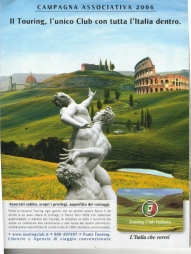Course Objectives
The study of Italian is a sensible choice for students, as Italian and English are related languages through common roots with Latin.
The Italian program extends the individual's ability to communicate with a wider world where the communication does not always occur in English and a trans-disciplinary approach is a valued asset.
Communication and transfer of knowledge from the language into other areas are the fundamental objectives of the course and the most sought after skills by employers.
Many Italian terms are common practice in fields such as Architecture, Music, Fashion, Design, Art, Banking and Tourism amongst others.
Course Outline
The course is designed for students with or without knowledge of the language but in keeping with their pre-knowledge from primary schools in the cluster. The junior course spans across eight semesters (Years 7, 8, 9 and 10), four of which are mandatory.
In particular, some topics are treated in greater depth than others.
Particular attention is paid to commercial, artistic and cultural aspects of Italy.
Frequent reference to the Australian context highlights common elements and differences.
The course provides a sensible balance between cultural, communicative and linguistic elements.
Students enrolled in the course are invited to the Italian Exchange Program with the Bologna City Council in Italy.
Students on school and faculty based Italian scholarships have priority on the exchange.
Italian Exchange Program

Students enrolled in Italian are eligible to participate in the Italian Exchange Program. The exchange:
is the result of the co-operation between Sunshine Beach High and the Bologna City Council;
is available to all students from Years 9 to Year 12;
- is recognized by a Queensland Premier for the “Best Service to Education”;
is responsible for more than 350 students participating in the Program.
Preparing for Future Careers
Italian can facilitate the integration of students in many industries and services. This specialised skill offers opportunities that can enhance communication skills in the workplace.
Trade - Italy is the second trading partner in Europe.
Tourism - Italy is one of the top tourist destinations in the world; travel agents, flight attendants and tour guides with Italian are more employable. In this case, English may become the second language.
Music - Italian is the language of music.
Fashion and Design - The European Institute of Design in Milan is noted as the best in the world. Instructions are in Italian only.
Sport - Australia has a permanent base near Milan for all its sport competitions in Europe (especially for cycling and rowing). Italy is the base.
University - With a percentage of VHA higher than 30%, studying Italian pays off. Two extra points are granted by larger universities to students graduating with Italian/a language.
Junior Course
This course is heavily integrated in its Junior Secondary approach and is delivered in CLIL approach (Content Language Integrated Learning).
They develop their repertoire of process skills and strategies to acquire and manipulate the verbal, non-verbal and written features of the target language. They recognise the importance in contemporary society of learning additional languages and using intercultural skills.
Students use the essential processes of ways of working to develop and demonstrate their knowledge and understanding. They explore a range of text types in the target language, noticing how communication needs and contextual challenges are responded to for different purposes and audiences, and they communicate in a range of controlled contexts on known topics, collaborating with peers. They reflect on their learning and language choices in relation to purpose, context and audience.
Senior Course
The need to communicate is the foundation for all language development. People use language to achieve their personal communicative needs - to express, exchange, interpret and negotiate meaning, and to understand the world around them. The central goal for additional language acquisition is communication. Students do not simply learn a language they participate in a range of interactions in which they exchange meaning and become active participants in understanding and constructing written, spoken and visual texts.